Unexpected Items In The Bagging Area est un projet développé entre l’École nationale supérieure d’arts de Paris-Cergy (ENSAPC) et l’Ircam autour d’un atelier de recherche et de création piloté par les artistes et enseignants Yann Beauvais et Jérôme Combier accompagnés par Grégoire Lorieux et Sébastien Naves (Ircam) sur le thème « images en mouvement et expériences sonores ».
En prenant pour point de départ les notions d’image projetée et de cinéma expérimental, des étudiant.e.s de l’ENSAPC ont développé des réflexions, des lignes de recherche, des propositions plastiques ou musicales, en lien avec d’autres médiums tels que la poésie, la musique improvisée, la programmation musicale ou l’installation.
Originellement destinées à être exposées à l’Ircam et au centre d’art Ygrec-ENSAPC, ces nouvelles créations, pour cause de crise sanitaire, seront accessibles sur les réseaux sociaux (Instagram) à partir du 15 juin 2020. Chaque jour, y seront proposés des extraits, des adaptations, des bandes annonces et des œuvres complètes produites par sept étudiant.e.s de l’ENSAPC : Dylan Altamiranda, Yannis Briki et Sarah-Anaïs Desbenoit, Lina Filipovich, Aurélie Massa, Loïck Mfoundou, Amosphère) en collaboration avec l’Ircam.
Face à l’isolement, au manque d’accès à certains outils plastiques et technologiques et à l’incertitude, il paraissait important aux enseignants comme aux étudiant.e.s de montrer que par-delà les contraintes du moment l’engagement créatif et l’engagement collectif sont des moyens par lesquels s’affirme le vivant.
![]()
Amosphère x NSDOS
ATyPtek
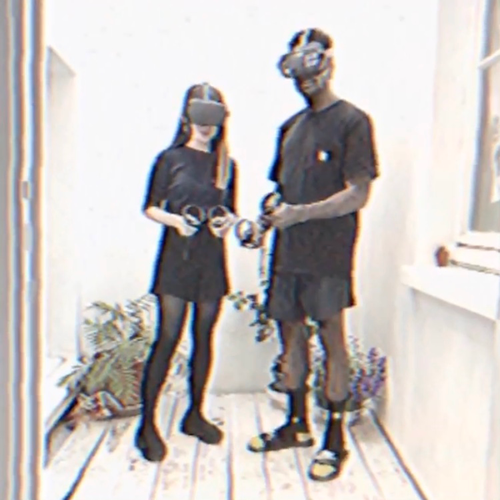 « Avec le devenir-artificiel de l’humanité et son pendant, le devenir-humain des machines, une sorte d’épreuve existentielle est donc engagée. L’être ne s’éprouve plus désormais qu’en tant qu’assemblage indissociablement humain et non-humain. La transformation de la force en dernier mot de la vérité de l’être signe l’entrée dans le dernier âge de l’homme, celui de l’être fabricable dans un monde fabriqué. » Achille Mbembe, Brutalisme, 2020.
« Avec le devenir-artificiel de l’humanité et son pendant, le devenir-humain des machines, une sorte d’épreuve existentielle est donc engagée. L’être ne s’éprouve plus désormais qu’en tant qu’assemblage indissociablement humain et non-humain. La transformation de la force en dernier mot de la vérité de l’être signe l’entrée dans le dernier âge de l’homme, celui de l’être fabricable dans un monde fabriqué. » Achille Mbembe, Brutalisme, 2020.
Les artistes NSDOS et Amosphère (aka Amo Vaccaria) proposent au public de découvrir une série d’œuvres sonores et performatives. Celles-ci ont été développées et mises en place au sein d’« ATyPtek » un écosystème virtuel où le spectateur devient un visiteur actif pouvant activer certaines œuvres et interagir grâce aux avatars mis à sa disposition.
Cette proposition immersive s’inscrit dans un questionnement plus large relatif à la place et au pouvoir de certaines pratiques artistiques dans un contexte de pandémie imposant une distanciation sociale et tente d’apporter des éléments de réponse aux questions suivantes : Quel est le champ des possibles pour la performance sonore et corporelle en temps de pandémie ? Quelles sont les formes architecturales possibles pour un monde dont le devenir est aussi incertain ?
Découvrir l'œuvre sur Instagram
Dylan Altamiranda
Tu te souviens de cette chanson ?
Tu te souviens de cette chanson ? (2020) est une pièce audiovisuelle pour laquelle Dylan Altamiranda a invité plusieurs personnes à chanter a capella deux morceaux emblématiques de musique classique : l’Ave Maria de Schubert et La Marche turque de Beethoven (deux morceaux largement diffusés en Amérique latine). Les personnes invitées à performer n’étaient pas tenues de connaître les paroles, ni de savoir chanter.
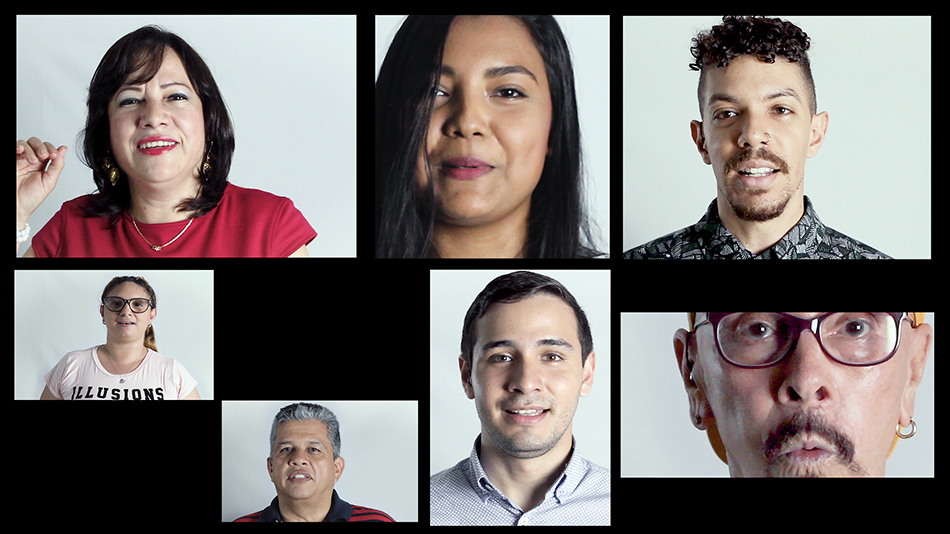
Le résultat est une pièce audiovisuelle dans laquelle le chœur que forment ces chants, sifflements ou fredonnements divers, retravaillés numériquement par l’artiste, offre une réinterprétation-reconstruction des œuvres de Beethoven et de Schubert. Tu te souviens de cette chanson ? souligne et questionne la réappropriation d’un héritage colonial et l’intégration de la culture dite savante au sein de la culture populaire.
Découvrir l'œuvre sur Instagram
Lina Filipovich
So Blue
So Blue est une vidéo associée à un collage audio, réalisée à partir de chansons d’Elvis Presley et de fragments issus du film J’ai 20 ans de Marlen Khoutsiev ainsi qu’à des cadres documentaires. Elle retrace un voyage potentiel d’Elvis à Minsk (URSS) en 1962 et place le spectateur face à une œuvre hybride, entre fiction et documentaire.
Découvrir l'œuvre sur Instagram
Yannis Briki et Sarah-Anaïs Desbenoit
La Cabine
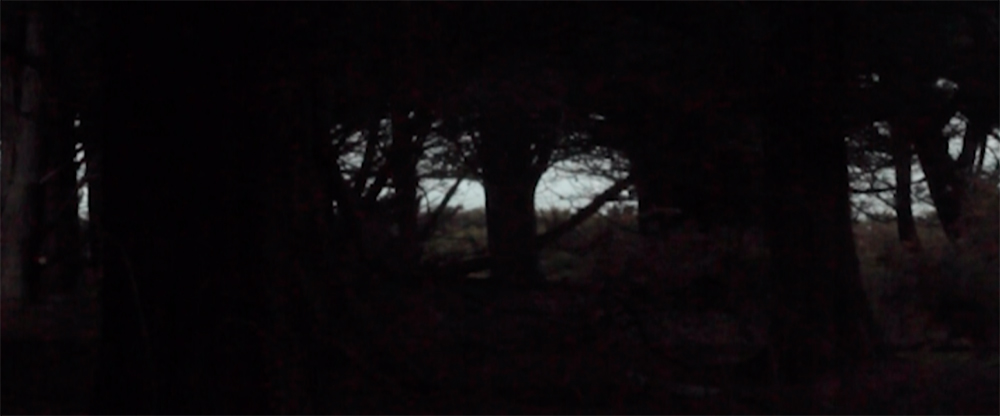
Les cabines téléphoniques sont des fantômes de notre paysage. Elles ont disparu sans bruit et peu à peu. Originellement pensée comme une installation, La Cabine est un projet qui imagine et met en scène un espace-temps dans lequel se perdraient des messages vocaux divers, utilitaires ou intimes, personnels ou professionnels, qui n’ont pas été reçus par leur destinataire et parviendraient dans une cabine unique, laissés à l’écoute d’un visiteur.
Découvrir l'œuvre sur Instagram
Aurélie Massa
Bio-scénose
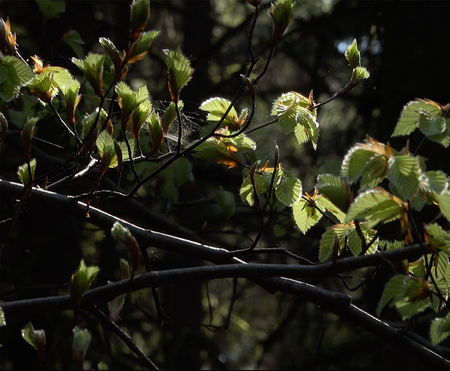 Bio-scénose est une vidéo dans laquelle deux feuilles racontent leur présence et leur histoire dans le monde, et la façon dont elles s’y meurent. Témoins du végétal, ces voix s’adressent au spectateur, qui est invité au fur et à mesure de la narration à se rapprocher d’elles pour les entendre.
Bio-scénose est une vidéo dans laquelle deux feuilles racontent leur présence et leur histoire dans le monde, et la façon dont elles s’y meurent. Témoins du végétal, ces voix s’adressent au spectateur, qui est invité au fur et à mesure de la narration à se rapprocher d’elles pour les entendre.
Ce travail qui prend pour origine un texte d’Aurélie Massa, s’est développé lors de la collaboration ENSAPC-Ircam sous la forme d’une production audiovisuelle. L’objectif de cette recherche était de trouver les outils de modification de la voix, afin de créer une matière sonore à partir d’un discours : « une voix commune aux mondes végétal et humain».
Découvrir l'œuvre sur Instagram
Loïck Mfoundou
A10
Loïck Mfoundou travaille comme coursier lorsqu’un accident de la route l’envoie à l’hôpital. A10 est la captation-témoignage de ce traumatisme qu’il fait revivre au spectateur en plaçant son regard à l’intérieur de l’habitacle de son véhicule et en l’emportant simplement sur les lieux de l’accident.
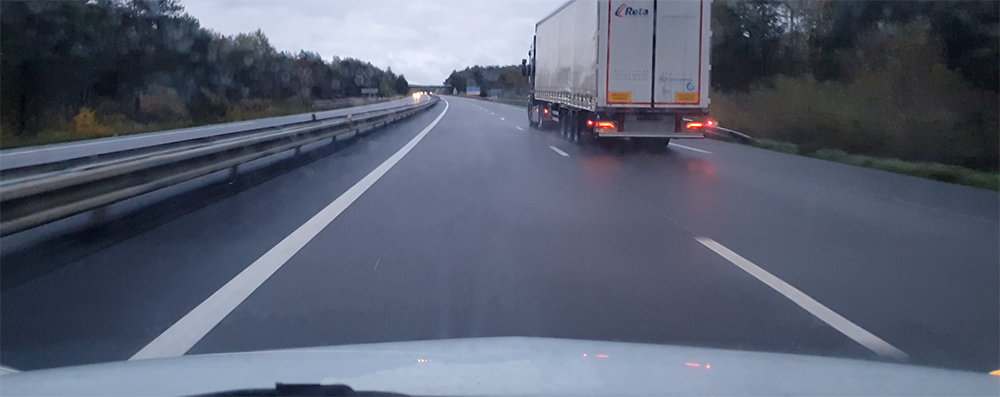
Le suspense interminable qu’imposent la monotonie des images d’autoroute, la perception voyeuriste depuis l’intérieur du véhicule se combinent en une plate et violente métaphore de la condition de nombreux travailleurs précaires en France.
Découvrir l'œuvre sur Instagram
Coproduction ENSAPC, Ircam-Centre Pompidou, en collaboration avec le Centre d’Art Ygrec-ENSAPC.



